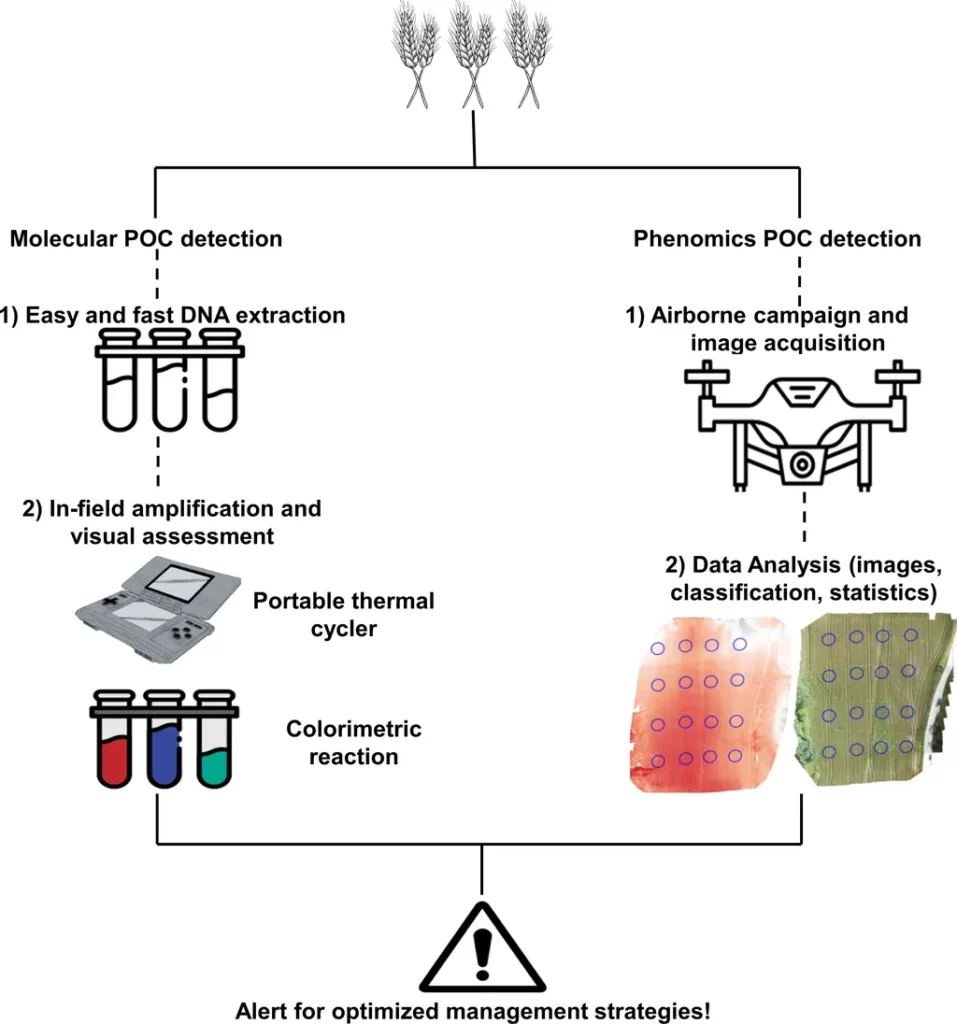In the relentless battle against crop diseases, farmers and agronomists are always on the lookout for new tools to stay one step ahead. A recent study published in the *Journal of Integrative Agriculture* introduces a promising new method for detecting and quantifying latent infections of wheat powdery mildew, caused by *Blumeria graminis* f. sp. *tritici* (Bgt). This innovation could significantly enhance disease monitoring and risk assessment, offering substantial benefits to the agriculture sector.
The research, led by Aolin Wang from the State Key Laboratory for Biology of Plant Diseases and Insect Pests at the Chinese Academy of Agricultural Sciences, focuses on the development of a rapid and accurate tool for detecting latent infections in wheat seedlings. The method combines recombinase polymerase amplification (RPA) with an end-point detection via lateral flow device (LFD), enabling highly sensitive detection of Bgt DNA. The tool’s limit of detection is an impressive 100 attograms per microliter, with minimal interference from other wheat pathogens or plant material.
“This new tool provides a rapid and accurate way to quantify latent infections, which is crucial for assessing disease risks in the spring,” Wang explained. The study further extends the RPA-LFD assay to estimate the level of latent infection through image-based analysis, showing a strong correlation with real-time PCR assay estimates of Bgt DNA.
The implications for the agriculture sector are substantial. Early and accurate detection of latent infections can enable farmers to take proactive measures, such as targeted applications of fungicides or implementing resistant varieties, thereby reducing crop losses and improving yield. The tool’s portability and ease of use make it particularly suitable for on-site monitoring, allowing for real-time decision-making in the field.
Moreover, the integration of image-based quantification offers a non-destructive and scalable approach to disease monitoring. This could be particularly valuable for large-scale farming operations, where timely and accurate data is essential for effective disease management.
The research also opens up avenues for further development and innovation. As Wang noted, “This tool can be further developed as an on-site monitoring tool, potentially integrated with other precision agriculture technologies for comprehensive disease management.”
In the broader context, this study highlights the potential of molecular diagnostics in revolutionizing plant disease management. As the agriculture sector continues to embrace technology, tools like this could play a pivotal role in enhancing crop resilience and sustainability.
With the global wheat market valued at over $40 billion, the economic stakes are high. Innovations like this not only promise to safeguard yields but also to contribute to food security and economic stability for farmers worldwide. As the agriculture sector continues to evolve, the integration of advanced diagnostic tools will undoubtedly shape the future of crop protection and disease management.

